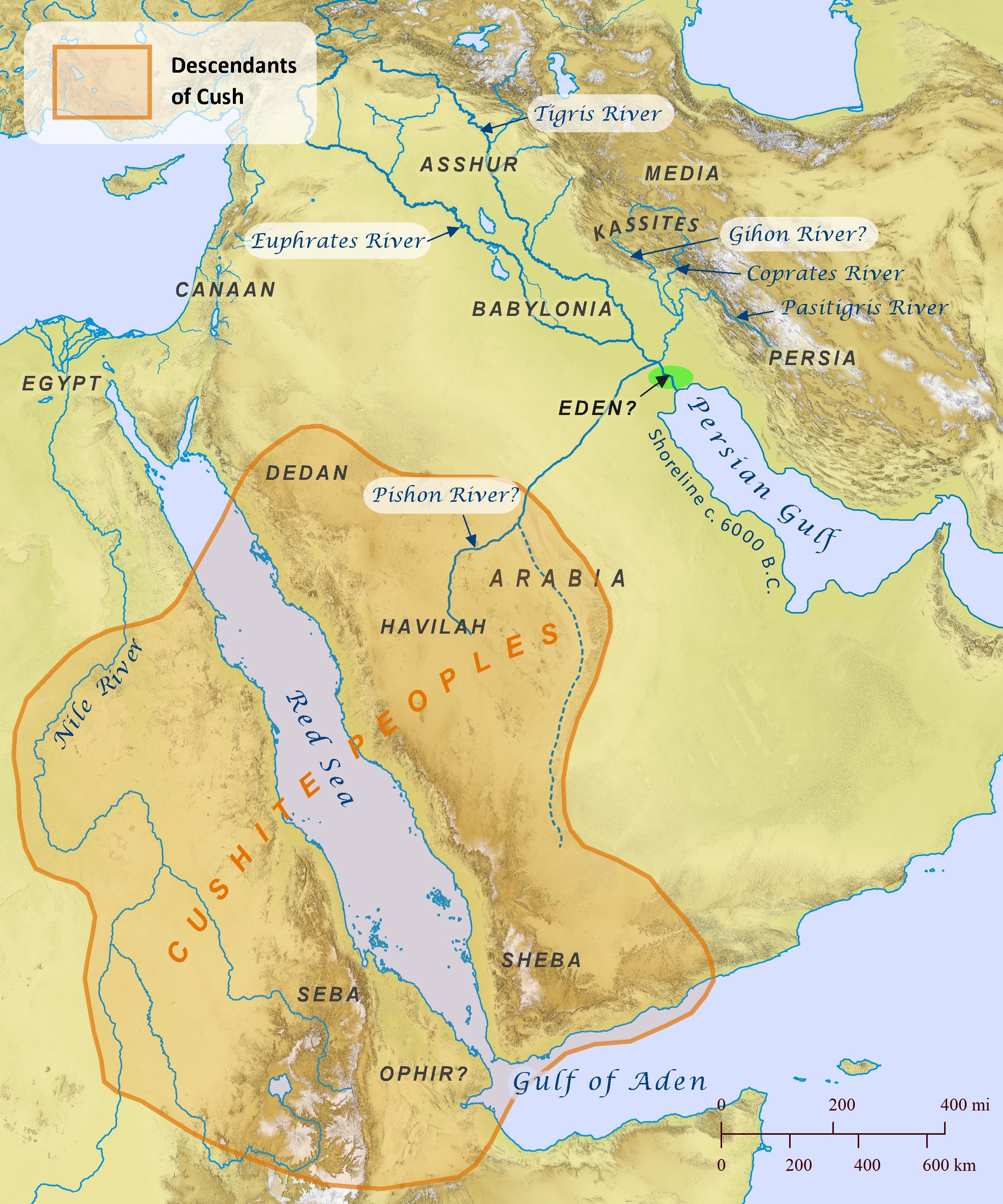Genesis 2
Whether one believes the biblical story of God planting a garden in Eden for Adam and Eve should be understood as allegory or historical event, an unassuming reading of the story suggests that the places mentioned were recognizable to the original audience and would have been sufficient to clarify for them where the garden was located. The story locates the garden of Eden at the confluence of four headwaters into a single river that watered the garden. These four rivers are called the Pishon, the Gihon, the Tigris, and the Euphrates. The identification of the last two rivers is widely accepted as the two great rivers that flow along either side of the lands of Asshur (Assyria) and Babylonia. The identification of the first two rivers, however, has become obscured over time and has been the subject of diverse speculation since at least as far back as the time of the first century Jewish historian Josephus. Some of this confusion stems from the incorrect assumption that Cush, noted as the basin of the Gihon, refers to the kingdom of Cush located immediately south of Egypt in Africa, which leads to the conclusion that the Gihon must be the Nile River (as Josephus also surmised). But the story makes it clear that the four rivers of Eden all joined together to form a single river, and this is difficult to reconcile with a Nile River identification. The Table of Nations, however, includes among the descendents of Cush several tribes along the Arabian coast as well as those of the kingdom of Cush in Africa (Genesis 10:6-7; see also Numbers 12:1; 2 Chronicles 14:8-14), and this may be the region intended in the story of Eden. Or it may be that the term Cush in Genesis 2 refers to the ancient Kassites, whose original homeland was likely just south of the land of Media. If this is the case, the river known to the Greeks as the Choaspes would be the most obvious candidate for the Gihon River, since it did indeed flow “through the entire land of Cush.” It appears that in ancient times this river, along with the Coprates River, joined the Pasitigris River before emptying into the Persian Gulf. Finally, if Havilah, which is associated with high quality gold, resin, and onyx, is to be located at modern Mahd adh Dhahab (“cradle of gold”), as shown here, that would make the modern Wadi al-Batin a good candidate for the Pishon River. This intermittent river running across the middle of Arabia once flowed with greater consistency in ancient times due to a wetter climate.
You are viewing: Where Was Garden Of Eden Map

Read more : Where Is Holy Land
download hi-res file
Source: https://t-tees.com
Category: WHERE

